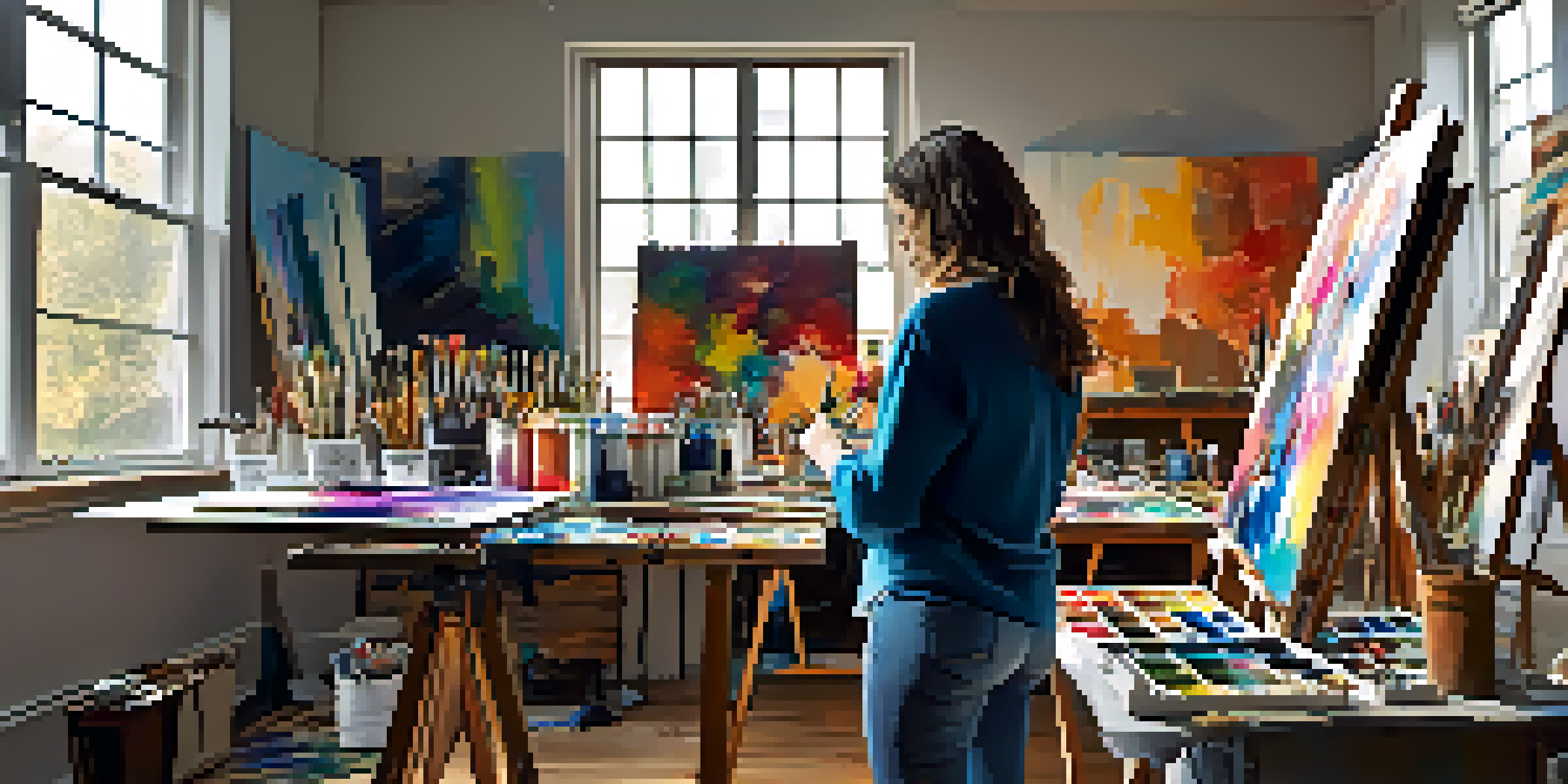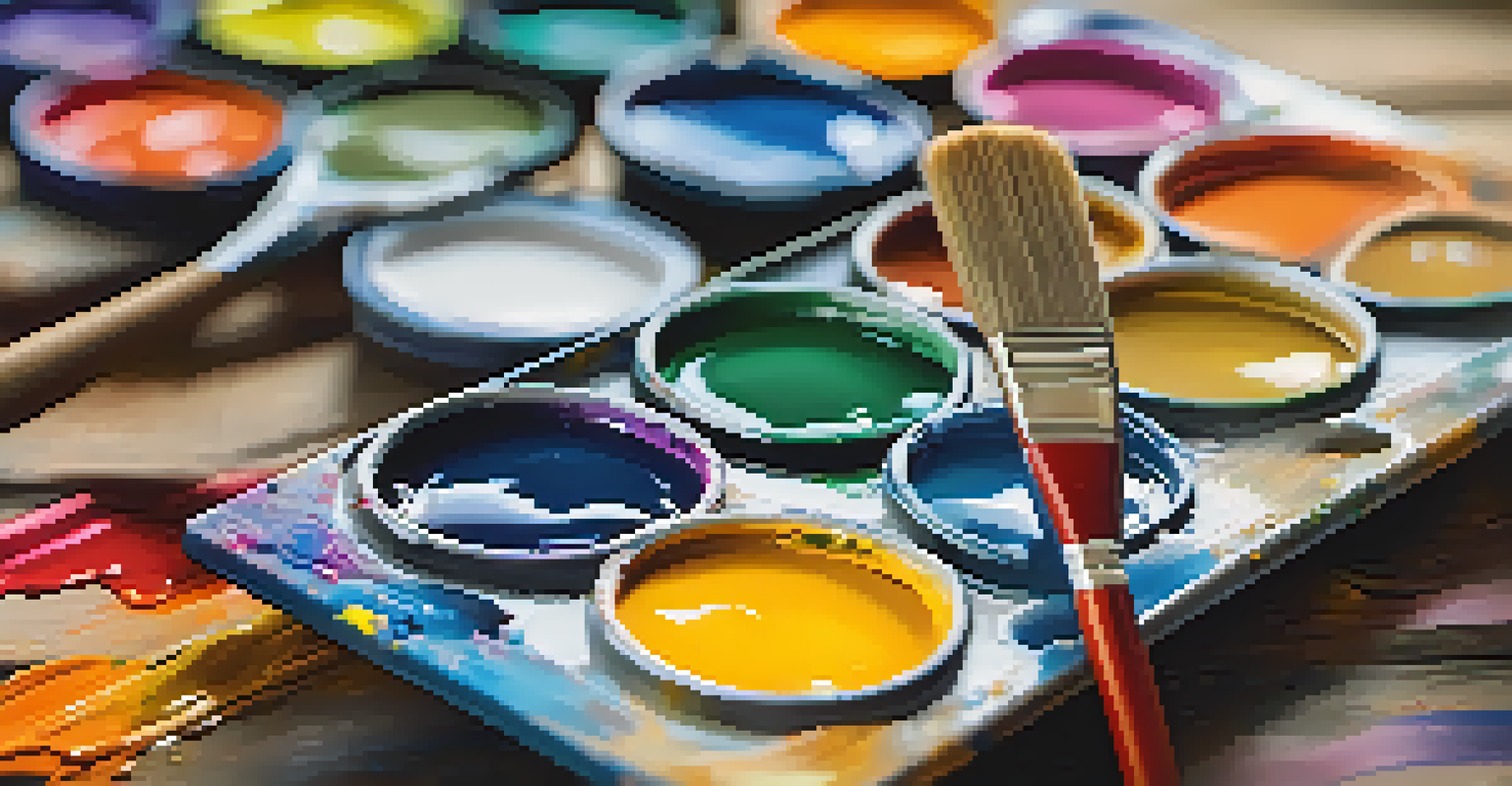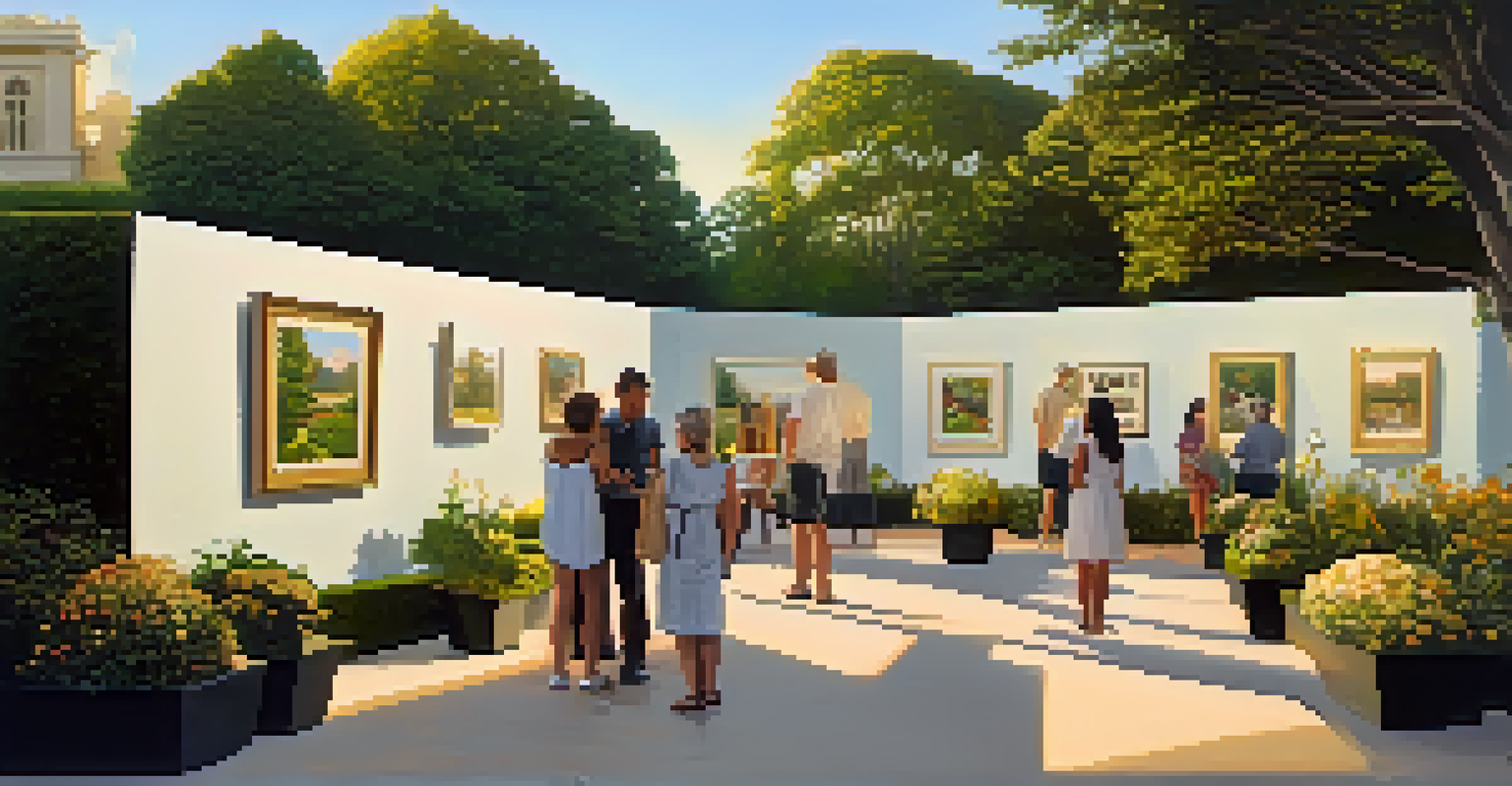The Interplay of Critique and Creativity in Modern Painting

Understanding the Role of Critique in Art
Critique serves as a vital tool in the art world, providing artists with feedback that can shape their work. It encompasses a range of perspectives, from professional reviews to casual opinions, each offering valuable insights. By engaging with critique, artists can identify their strengths and areas needing improvement, fostering growth in their creative journey.
Critique is the cornerstone of the creative process; it’s how we refine our vision and explore new avenues of expression.
Moreover, critique isn’t just about pointing out flaws; it can highlight innovative techniques and ideas that resonate with audiences. For instance, when a painter explores an unconventional style, critiques can validate the artist's unique approach, encouraging further experimentation. This nurturing environment allows creativity to flourish, as artists feel empowered to push boundaries.
Ultimately, critique acts as a conversation starter, sparking dialogue between artists and viewers. This exchange enriches the artistic community, creating a dynamic space where ideas can be shared, challenged, and refined. In this way, critique becomes an essential part of the creative process, fueling inspiration and innovation.
The Creative Process: Navigating Feedback
Navigating feedback can be a delicate dance for many artists. While some may embrace critique with open arms, others might feel defensive or discouraged. Understanding how to process feedback constructively is crucial; it allows artists to discern which comments resonate and which to set aside.

For example, a painter may receive mixed reviews about a new piece. Instead of succumbing to self-doubt, they can view the feedback as a chance to refine their vision. This mindset transforms critique from a potential setback into a stepping stone for creative evolution, encouraging a more resilient approach to artistry.
Critique Fuels Artistic Growth
Engaging with critique helps artists identify strengths and weaknesses, fostering their creative evolution.
Moreover, embracing constructive criticism can lead to unexpected breakthroughs. Artists often find that taking a step back and reevaluating their work from an outsider’s perspective can reveal new dimensions and possibilities. This shift in perception can invigorate their creative process, leading to profound developments in their art.
Creativity as a Response to Critique
Interestingly, critique can often ignite creativity in unexpected ways. When artists face criticism, they may feel motivated to prove their detractors wrong or to explore new avenues to express their ideas. This response can lead to fresh works that are more daring and innovative than previous efforts.
Art is a reflection of our times and critiques provide the lens through which we understand it.
Take, for instance, the evolution of abstract painting, which emerged as a response to traditional artistic standards. Many artists, feeling constrained by conventional expectations, began to experiment with form and color, ultimately redefining what painting could be. In this light, critique becomes a catalyst for creative transformation.
Furthermore, artists might intentionally seek out critique to stimulate their imagination. By sharing their work with others, they open themselves up to a wealth of perspectives that can challenge their preconceived notions. This interplay between critique and creativity encourages a vibrant exchange of ideas, pushing the boundaries of modern painting.
The Influence of Cultural Context on Critique
Cultural context plays a significant role in how critique is shaped and perceived. Different societies have varied expectations and standards for art, which can influence both the feedback artists receive and how they interpret it. Understanding these cultural nuances can help artists navigate critiques more effectively.
For example, an artist from a community that values tradition might receive harsher criticism for abstract work than one in a more progressive environment. This disparity can impact an artist’s creative decisions, as they may feel pressure to conform to cultural norms. Thus, awareness of cultural context becomes essential in the dialogue between critique and creativity.
Cultural Context Shapes Feedback
Different cultural backgrounds influence how critique is perceived and can impact an artist's creative decisions.
Additionally, cultural movements can shift the landscape of critique itself. As societal values evolve, so do the criteria for evaluating art. This dynamic exchange fosters a rich tapestry of creative expression that reflects the changing times, illustrating the profound connection between culture, critique, and creativity.
The Evolution of Art Criticism in the Digital Age
The rise of the digital age has transformed the landscape of art criticism, making it more accessible than ever. Online platforms allow anyone to share their thoughts on artwork, democratizing the critique process. This shift can empower emerging artists, giving them a voice in a space that was once dominated by established critics.
However, this accessibility also means that artists can encounter a flood of opinions, which can be both a blessing and a curse. With so many voices in the conversation, distinguishing constructive feedback from noise can be challenging. Artists must develop a discerning eye to navigate this new terrain, focusing on insights that genuinely resonate.
Moreover, digital critique can foster a sense of community among artists and art enthusiasts. Social media platforms enable real-time discussions and encourage collaboration, creating a dynamic environment that nurtures creativity. In this way, the digital age's influence on art criticism is reshaping how artists engage with their work and each other.
Art as a Reflection of Critique
Art often serves as a mirror, reflecting the critiques and conversations happening within society. Many modern painters draw inspiration from current events, social movements, and cultural dialogues, infusing their work with relevant themes and issues. This relationship between art and critique allows for profound commentary on the world around us.
For instance, contemporary artists frequently address topics like identity, politics, and environmental concerns in their work. By doing so, they engage viewers in critical discussions, prompting them to reflect on their own perspectives. This interplay between critique and creativity fosters a deeper understanding of the complexities of modern life.
Digital Age Transforms Critique
The rise of online platforms has democratized art criticism, enabling broader discussions but also requiring discernment.
Additionally, art can challenge societal norms and provoke thought by presenting alternative viewpoints. When artists take risks in their work, they invite critique, creating a space for dialogue that can lead to social change. In this way, the reflective nature of art serves not only as a response to critique but also as a catalyst for broader conversations.
The Future of Critique and Creativity in Art
As we look to the future, the relationship between critique and creativity in art will continue to evolve. Emerging technologies, shifting cultural landscapes, and new artistic movements will undoubtedly influence how critique is formed and received. This ongoing transformation presents exciting opportunities for artists to explore uncharted territories.
Furthermore, the growing emphasis on inclusivity and diversity in the art world encourages a wider range of voices in the critique process. This expansion can lead to richer, more nuanced discussions that reflect a broader spectrum of experiences and perspectives. As artists and critics engage in this dialogue, we can expect a more vibrant and dynamic artistic landscape.

Ultimately, the interplay of critique and creativity will remain a driving force in modern painting. By embracing feedback and remaining open to new ideas, artists can continue to push boundaries, challenge conventions, and inspire future generations. The journey of art is one of discovery, and the ongoing dialogue between critique and creativity is at its heart.